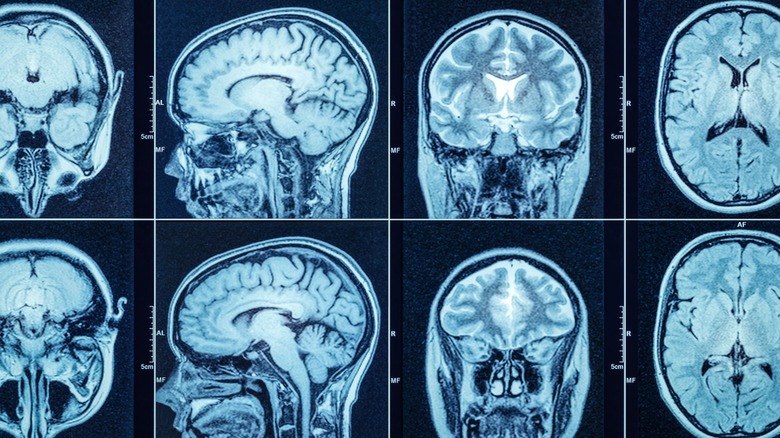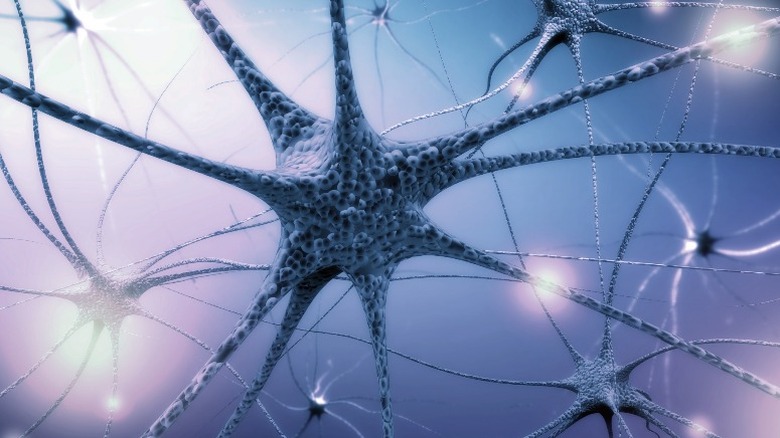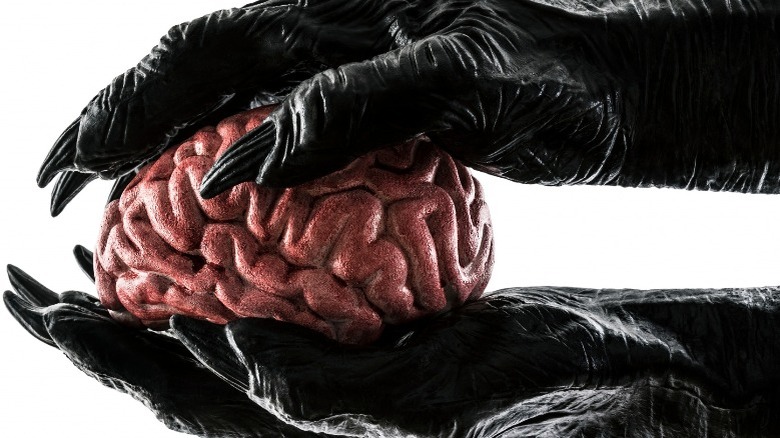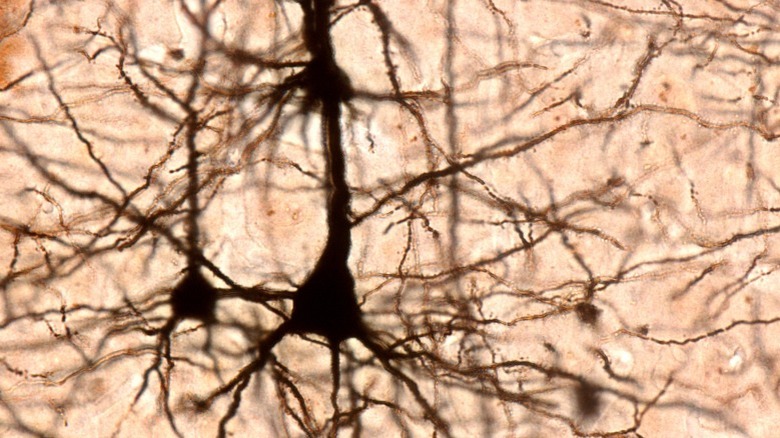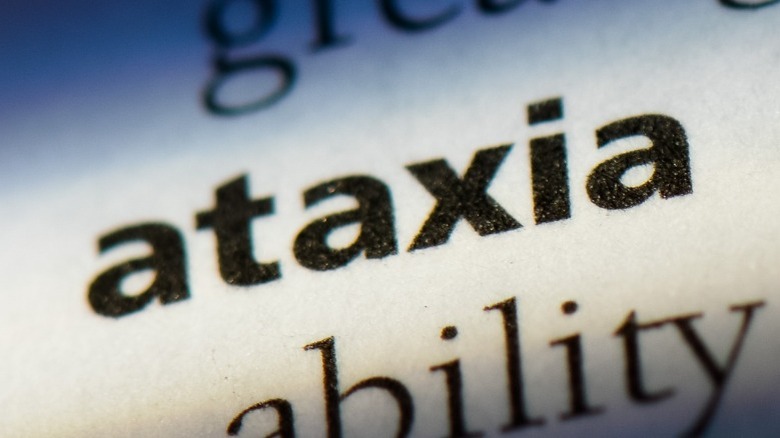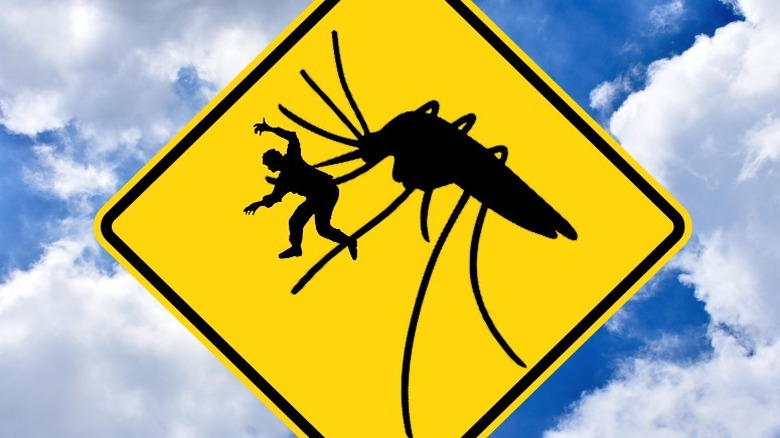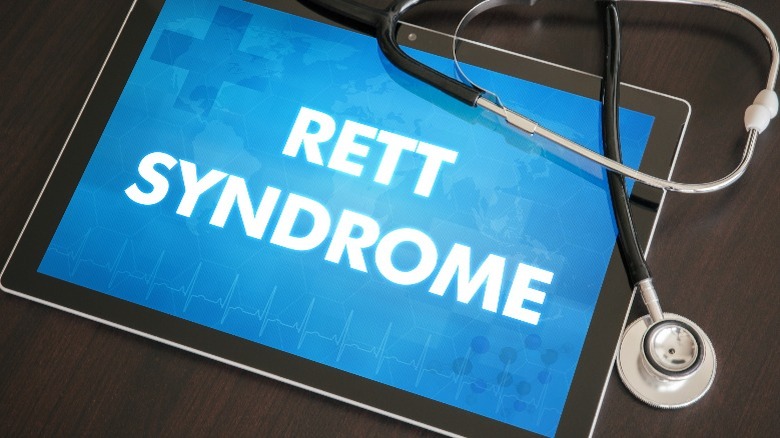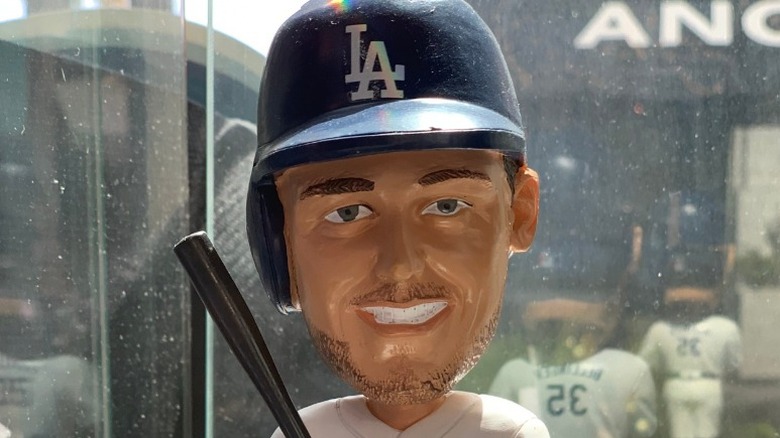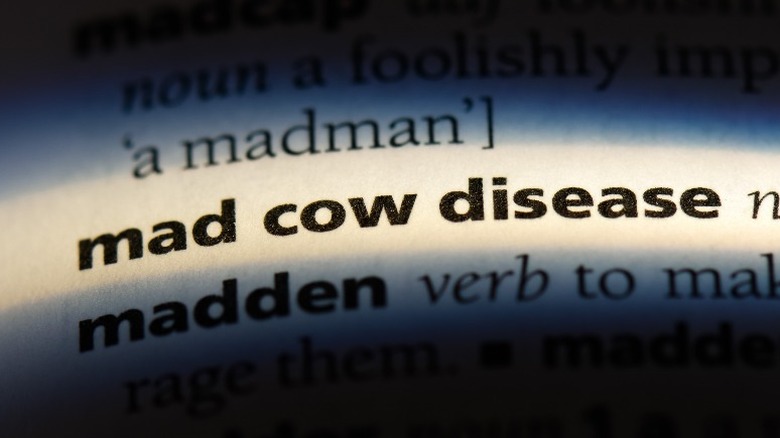Rare Neurological Diseases You Probably Haven't Heard Of
According to the National Library of Medicine, there are over 600 neurological disorders that have been identified. Some, like Alzheimer's, are common enough that you'd be hard-pressed to find a person who didn't know someone that was impacted by it. They might be able to affect any one of us and are only discovered later in the life cycle. Others, like Thomsen's or Wilson's disease, are genetic disorders that are inherited from the DNA of one or both parents and are sometimes diagnosed early in life.
Some neurological conditions are so rare that evade the public's attention. Some might affect one out of every 100k live births, while others might only have a few dozen known cases. The causes of any neurological condition vary. Some are certainly genetic, and therefore avoidable, but there are others still that are brought on by head trauma, exposure to toxins, or severe alcoholism. There's also one that you can get by practicing cannibalism, but we'll save the specifics of that one for later.
Whatever the cause, the rarest of the rare are certainly all ones that you'll feel lucky you have been able to avoid. Hopefully, by learning a little about some of them, you'll find yourself feeling a little more compassion for those who do have to live their lives with these often painful and limiting diseases.
Krabbe's Disease
The nerve cells in the human body have a protective layer around them called the Myelin sheath. The Cleveland Clinic tells us that it is made up of fat and protein and wraps itself around the nerve cell. These nerve cells send messages to your brain so that your central nervous system can fully function.
Krabbe's Disease is a rare disorder that damages the Myelin sheath. When this part of the nerve cell is damaged or missing, the nerve cells are not only are greater risk of harm but are also not able to transmit information to the brain as quickly or effectively. Krabbe's Disease is generally one that is diagnosed in a person's childhood, typically around the age of five.
A person develops Krabbe's disease when they inherit genes that cause mutations in the galactocerebrosidase enzyme (per MSN). The only way to prevent this condition from occurring is for someone who has this gene to forego having children. The only way to know for sure if you have the recessive gene is to have genetic mapping performed.
The impact of Krabbe's Disease on the body is about as severe as it is rare. While there are some effective treatments for some of the symptoms out there, there is still a severe risk of some serious complications for those for whom the treatments fail. These include blindness, deafness, severe mental deterioration, and respiratory failure. There is no known cure for Krabbe's disease, and it can be fatal.
Locked-in Syndrome
What could be more terrifying than being trapped within your own body, unable to speak or move? Those who suffer from Locked-in Syndrome experience exactly that, being left with no ability to move whatsoever except for the blinking of the eyes.
Locked-in Syndrome has several known causes. Traumatic brain injuries can trigger it, as can nerve damage and overdoses from certain medications. As far as medical science knows, this condition is not reversible and has no known effective treatments. The National Institutes of Health report that some muscle treatments could be used to help alleviate symptoms. They also state that several devices can be used to make it easier for the patient to communicate with others.
This disorder has been the subject of many news stories in 2022, due mostly to a sufferer named Lacey Fletcher. Fletcher had long been a victim of this condition and had been left in the care of her mother and father in Louisiana. After her unresponsive body was found "fused to the couch" in their living room, Fletcher's parents have both been charged with second-degree murder. Fletcher, who was unable to speak or move, was left to rot away in her human waste for an undetermined amount of time. When her body was being removed, it was noted that it was covered in multiple insect bites and human feces (per The New York Post).
Agnosia
Imagine seeing a familiar face but not being able to recognize it. Or hearing a sound that you should be able to quickly identify but are left without any memory of what would make it. These are types of Agnosia, or the inability to recognize using one's senses (via Bel Marra Health).
Agnosia exists in three different forms: Visual, Auditory, and Tactile. Visual Agnosia means a person can see the object but is not able to identify it. This means they could be looking directly at a loved one's face and not be able to determine who it is by sight. Auditory Agnosia is the inability of a person to process sounds. They will be able to fully hear it, but will not be able to tell you what the sound is or what/who is making it. Finally, Tactile Agnosia will keep a person from identifying an object by touch alone. They can feel it and describe its properties, but will not be able to state what it is.
Several things can cause Agnosia. Damage to the brain's Parietal and/or Occipital Lobes can occur due to head trauma, stroke, oxygen deprivation, or carbon monoxide poisoning. There is not any standard treatment for this condition, as each cause will have its own specialized form of treatment. In most cases, those who suffer from Agnosia will be able to make a recovery, though how much so is based on several factors including what caused it to begin with.
Paraneoplastic neurologic syndromes
If you thought that having a form of cancer isn't bad enough, you might be surprised to learn that there are a whole series of neurological disorders that are brought about by the cancer cells in patients. These are collectively known as Paraneoplastic Neurologic Syndromes, rare conditions that directly affect the body's brain, nerves, or spinal cord.
NORD describes these disorders as not being directly caused by the tumors, but by the body's response to the tumors. A person's immune system goes into overdrive to fight the tumor, which causes damage to different parts of the central nervous system. While oftentimes this damage is minimal or undetected, in rare cases it can cause severe damage. In these instances, the immune system, which is meant to protect the body, does more damage to the body than the actual tumor has done.
The different conditions generated by the attack on the central nervous system vary greatly. Polymyositis, for example, is the inflammation of muscles. Lambert Eaton Myasthenic Syndrome will cause shoulder and hip muscles to become weak. Other conditions can cause vision problems, trouble balancing, and a whole host of other symptoms that make your day-to-day more difficult than it should be.
Treatment for these conditions will vary, depending on which one you have been diagnosed with. Medical experts agree that since the tumor is the catalyst, removing the tumor should be the main course of attack.
Batten's Disease
While it does sometimes first present itself in early adulthood, Batten's Disease is most commonly diagnosed when a person is in infancy or early childhood. The Boston Children's Hospital states that this very rare condition is estimated to be present in only 14,000 children across the globe.
Unfortunately, this is not a curable disease, and many of the children diagnosed will die young. Some will reach their teenage years, and a scant amount will live into their early twenties.
Batten's Disease will cause a decline in the infected person's central nervous system, the rate of which varies from person to person. They can suffer from a variety of neurological issues that range from loss of vision to seizures. In older children that develop it, there can be a loss of language or motor skills. Batten Disease occurs when the child has two copies (one from each parent) of a mutation on a group of genes known as CLN genes.
Ataxia
When you see someone who is slurring their speech and stumbling about, your first reaction might be to think that they are intoxicated. But what if there was a disease that caused these same bodily actions?
Ataxia is a neurological condition that is caused by damage to the cerebellum. This part of the brain controls body movement and when it is compromised it really wreaks havoc on the way the body operates. This degenerative disease can limit the sufferer's movement of their limbs and fingers. Ataxia also makes speech more difficult, often resulting in slurring.
According to The National Ataxia Foundation, you can get Ataxia from one of several causes. It can be hereditary, though this is extremely rare. There are also certain medication reactions that can result in Ataxia. Heavy alcohol use has been known to cause patients to develop this condition, as has exposure to certain toxins.
Ataxia is a degenerative condition that can oftentimes lead to an early death. The treatment for Ataxia is symptom-based, meaning that specific medications are given to alleviate specific abnormalities that Ataxia can cause. Medication to treat balance issues, muscle cramping, dizziness, and other symptoms are given to the patient to help improve their quality of life.
Pick's Disease
More formally known as Frontotemporal dementia, Pick's Disease is a rare neurological condition that affects certain parts of the brain. Though some of the symptoms are similar to Alzheimer's Disease, Pick's has many characteristics that are different. Both Alzheimer's and Pick's have dementia as primary symptoms, The Bright Focus Foundation reports that the main differences in the two diseases can often be spotted early on.
In a patient with Pick's, the behavioral problems will typically be noticeable before there is ever any sign of memory loss. Penn Medicine tells us that Pick's Disease works very slowly, with the impacted person developing behavioral changes that might not be immediately noticeable. They point out that someone's inability to maintain a job, an increase in impulsivity, a decline in hygienic practices, and other noticeable character changes in a person can serve as early warning signs. Pick's Disease slowly shrinks the brain, and by doing so will gradually change how effectively different parts of the brain work.
As the disease progresses, there can be severe behavioral problems, lack of inhibitions, and disassociative issues. Some with Pick's disease will have problems with speech or understanding the speech of others. Some will echo everything said to them, while some will go completely mute.
There is no cure for Pick's Disease. Medications to help control the behavioral problems associated with Pick's is the most common form of pharmaceutical treatment.
Microcephaly
Out of every few thousand live births, a baby is born with Microcephaly. The World Health Organization defines this condition as an infant born with a smaller head than normal, or as a person whose head doesn't grow after birth. The organization points to several causes of Microcephaly, including the Zika virus, fetal malnutrition, and fetal trauma.
There is no known cure for this condition. Many of the children who suffer from it develop cerebral palsy or will suffer from seizures. Learning disabilities in children with Microcephaly are not uncommon, either.
Some Microcephalic children continue to develop normally and experience no symptoms or other issues as they grow into adults.
There is also no way to diagnose Microcephaly in the womb, though the WHO does point out that in the third trimester of pregnancy there are tests that can be potential indicators. After birth, infants' heads are measured and checked against the WHO head size standards. Pediatricians will continue to routinely measure a baby's head during regular visits to verify normal development.
Rett Syndrome
It's difficult to imagine the emotions a parent would feel seeing their small child slowly regress on all of the developmental abilities that they had acquired in the first 12 to 18 months of life. Rett Syndrome sneaks up on a parent in just that way, as they are forced to witness their child slowly lose their ability to walk, crawl, and communicate. Rett Syndrome can also lead to heart problems, seizures, and other horrors that no parent would ever want their child to suffer from.
The International Rett Syndrome Foundation reports that those who develop this rare disorder are almost always biological females, though it has been known to occur in biological males in extremely rare instances. The Foundation also points out that Rett Syndrome is commonly misdiagnosed with autism, as sometimes the ambulatory issues associated with Rett's aren't the first symptoms to present.
Though mostly immobile during the final stage of Rett Syndrome, those who live with this diagnosis are still capable of feeding themselves and can toilet with some assistance. Though their speech is impaired, the Rett Syndrome Foundation reports that a person with Rett Syndrome is still capable of expressing a broad spectrum of emotions and "understand far more than they can communicate."
Bobblehead Doll Syndrome
Bobblehead Doll Syndrome is exactly what it sounds like. Those afflicted with it uncontrollably nod their heads up and down every few seconds, involuntarily mimicking the actions of a bobblehead doll.
This is one of the rarest conditions of them all, with only 57 cases documented since 1966 (per The National Library of Medicine). Though it has made its presence known for the first time in a patient as old as 26, the median age for this to first occur is three.
The science behind what causes it is too complex to discuss in detail in this article, but an abbreviated synopsis would be to state that it is the result of too much pressure placed on the third ventricle of the brain via a lesion. As this lesion continues to grow, the pressure is felt on various other parts of the body, resulting in the involuntary head bobbing.
NORD reports that the lesion can also cause hydrocephaly, more commonly known as water-on-the-brain. Treatments include the surgical removal of the lesion or the draining of the fluid buildup.
Kuru
Kuru is in a category of diseases known as transmissible spongiform encephalopathies (TSE). Also known as prion diseases, TSEs attack the cerebellum area of the brain. According to Healthline, Kuru and other TSEs happen when the brain is exposed to prions, which are abnormal proteins that rapidly multiply inside the skull. As they do so, they cling to parts of the brain and put the brakes on the brain's normal functions.
Those who develop Kuru will suffer from mobility issues, slurred speech, dementia, muscle twitching, and eventually, death as the inflicted person will eventually lose the ability to swallow. Those who don't die of malnutrition will succumb to pneumonia.
Sounds terrible, doesn't it? Don't worry, you probably won't get this awful disease unless you practice cannibalism. Those prions mentioned earlier enter your system when you eat the brains of another human being that is infected with it. It's kind of like a people's version of Mad Cow disease in that way.
Kuru was most widely diagnosed in New Guinea among the Fore tribe in the mid-20th century. As part of religious rituals, these folks would routinely consume parts of their dead relative's bodies, including the brain. After discovering why so many of the Fore people were suffering from involuntary convulsions, muscle spasms, and unusual outbursts of laughter, the government in New Guinea strongly discouraged the practice. Today, cases are quite rare, the diagnoses are the result of an incubation period that can be as long as 30 years.
